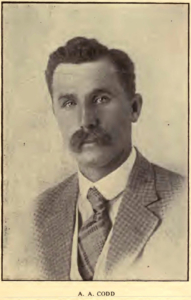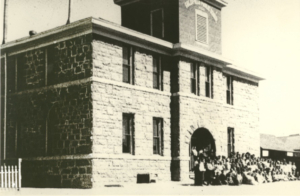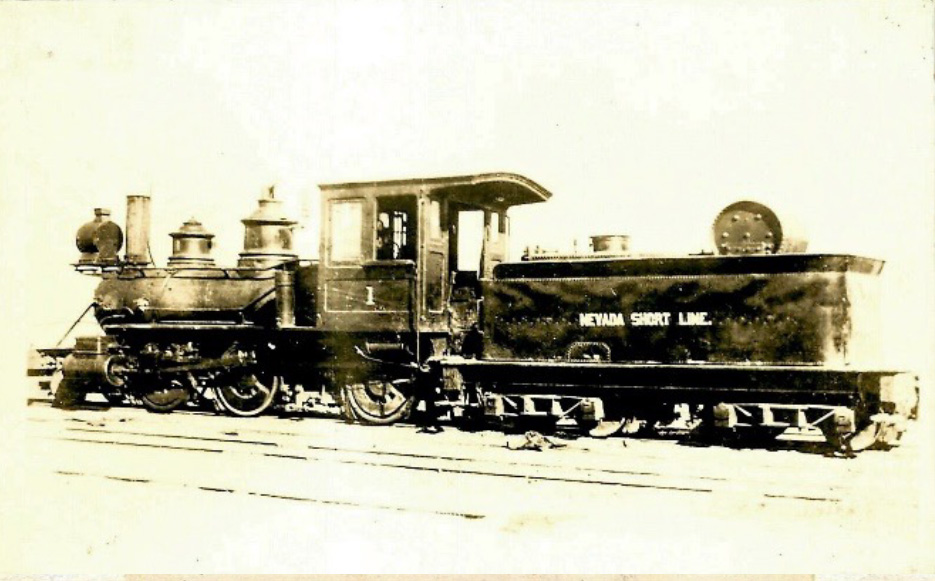A Goldfield High School Trustee By John Rudderow and Deana Glatz
ARTHUR ASHTON CODD came to Goldfield late in 1904 at the invitation of his old friend and college classmate, Claude M. Smith.
Smith had been the District Mining Recorder of the Goldfield district since its organization in 1903, and was appointed Deputy District Mining Recorder, a position he held for about four years.
At that time, Goldfield was the largest mining district in the United States; during the years 1904-05, fifty to seventy-five location certificates a day were not unusual to record. In November 1905, Mr. Codd completed his Goldfield residence at 107 S. Franklin and had it ready for the arrival of his family that same month. (Editor’s note: The residence no longer stands)
Mining:
While in Goldfield, Mr. Codd was in the forefront in nearly every mineral development in the area, the most notable being his St. Ives Leasing Co. located a short distance east of Goldfield. He also opened and/or operated properties at Weeber mountain, north of Lida; the Gold Quartz group in the Red Mountain section east of Diamondfield; Wonder; the Barry-Goldfield Co. of New York which developed the Potter group of claims south of Goldfield and a number of other places. Mr. Codd was also one of the most reliable brokers of Goldfield.
Education:
With all of his service to the mining industry, A. A. Codd’s greatest contribution was to the cause of education. During his time in Goldfield, he was one of the foremost factors in building a fine educational system there. In May 1906, in the election for the Board of School Trustees, there were two tickets, the Citizens ticket, composed of A. A. Codd, C. H. Beesley and E. T. Patrick, and the other, the Socialist ticket, composed of Fred G. Clough, M. F. Richter and C. M. Carpenter. The Citizens ticket was victorious.
Goldfield’s first stone school building [Cedar Street], two stories in height and 60 x 80, started under the administration of the previous Board of School Trustees, was nearing completion and the new board was tasked with increasing the current staff of teachers to accommodate this new school and to having plans drawn for another school house to accommodate the increasing population of students. The Goldfield Gossip of October, 1906 reported the total school census for the Goldfield district is 624 pupils.
At the new board’s first meeting, Beesley was appointed president, Patrick, member and Codd, clerk, a position he held through 1910. The board re-appointed Miss Mary A. McLaughlin principal and selected three teachers from the 37 applicants to teach during the coming term; their salaries were set at a VERY generous $120 per month.
Featured Stories
- Agnes M. Duffy – Goldfield Student and Teacher
- An Early Goldfield Family
- A Goldfield High School Student
- Archibald Angus MacDonald
- Arthur Ashton Codd – Champion of Education
- Benjamin Rosenthal
- Claude Inman
- The Florence Mine
- Francis Marion Smith
- George Grahm Rice
- George S. Nixon
- George Wingfield
- Goldfield Cemetery Stories
- Goldfield’s Dirty Laundry
- Ish-Curtis Building
- Jake Goodfriend – Goldfield’s Dance Hall King
- Joe Gans
- John S Cook
- Laura Amanda White
- Tex Rickard
- Virgil Walter Earp in Goldfield







